Fire chief recounting over 30 years fighting fires and conducting search and rescues in Alaska
skip to main |
skip to sidebar
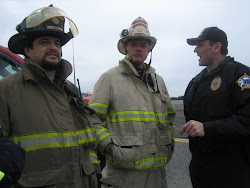
"and furthermore...hey...hey...Are you guys listening?"
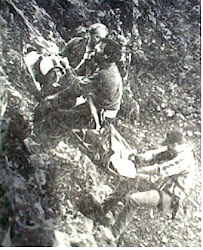
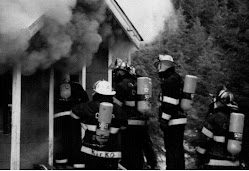
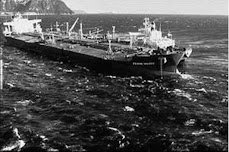
When'd they put that reef there?
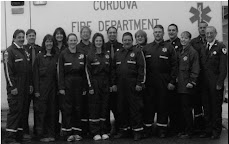
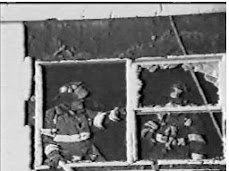
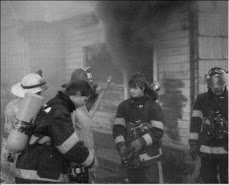


 I am a 34-year veteran with the Cordova (Alaska) Volunteer Fire Department. The 40-member fire department provides structural, and marine fire protection, level-threeEMS, underwater rescue and recovery, and search and rescue services for the north coast of the Gulf of Alaska.
I am a 34-year veteran with the Cordova (Alaska) Volunteer Fire Department. The 40-member fire department provides structural, and marine fire protection, level-threeEMS, underwater rescue and recovery, and search and rescue services for the north coast of the Gulf of Alaska.
I am the past president of the Alaska Fire Chiefs Association, a state certified Level-IV instructor, and an adjunct instructor for the National Fire Academy. I was instrumental in creating numerous fire service courses and authored the 160-hour Senior Fire Officers Course covering NFPA-1021.
At the request of the Alaska Division of Emergency Services, and the mayor of Cordova, I represented the City of Cordova during the response to the 1989 Exxon-Valdez oil spill. I was responsible for converting the major oil companies who ship oil through Alaskan waters to use ICS in their spill response plans
"and furthermore...hey...hey...Are you guys listening?"


OOPS!

When'd they put that reef there?
EMS Division 2002

Division 2

2nd In

The Family

Fishing Boat Fires
Thanks for attending
Thanks for attending my Valdez class on boat and marina fires. I hope to see many of you in Juneau in my classes on the SwissAir 111 crash and the Exxon-Valdez Oil spill. Then check the schedule of the EMS Symposium in Anchorage for the recruitment/retention classes I'll be presenting.
Dewey
 I am a 34-year veteran with the Cordova (Alaska) Volunteer Fire Department. The 40-member fire department provides structural, and marine fire protection, level-threeEMS, underwater rescue and recovery, and search and rescue services for the north coast of the Gulf of Alaska.
I am a 34-year veteran with the Cordova (Alaska) Volunteer Fire Department. The 40-member fire department provides structural, and marine fire protection, level-threeEMS, underwater rescue and recovery, and search and rescue services for the north coast of the Gulf of Alaska.I am the past president of the Alaska Fire Chiefs Association, a state certified Level-IV instructor, and an adjunct instructor for the National Fire Academy. I was instrumental in creating numerous fire service courses and authored the 160-hour Senior Fire Officers Course covering NFPA-1021.
At the request of the Alaska Division of Emergency Services, and the mayor of Cordova, I represented the City of Cordova during the response to the 1989 Exxon-Valdez oil spill. I was responsible for converting the major oil companies who ship oil through Alaskan waters to use ICS in their spill response plans
PURCHASING THIS BOOK
Click or Copy/Paste
https://www.amazon.com/Fire-Ice-Tales-Alaskan-Volunteer/dp/0978976681
FOR DISCUSSION GROUPS
Readers of the first edition of this book discussed within their own groups numerous topics they found useful in the emergency operations portion of this book. That’s not surprising, even though this book initial began as a memoir…not a text book. All of the officers of the
But surprisingly, topics for discussions were gleaned from the Leadership or Management sections as well. Several items or stories evoked questions that got the conversations started. Here are some examples of those questions
1. The author suggests that the murder described on page 257 was a result of “Mean-World Syndrome”. Do you agree with his view of the shooter? Do you believe such a syndrome exists? Are there any known “powder kegs” in your service area around which you should be extra cautious?
2. In the chapter “Working with Cops and Other Miscellaneous Gun Calls”, the author described his fire department’s duties during hostage or barricaded-gunman situations. Is that cooperative duty something your department could or would be willing to offer local law enforcement? Is it something they might need?
3. In the same chapter, on page 95, the author presented a theory about the root-cause of the disparity between firefighters (particularly volunteer firefighters) and local cops or State Troopers. Do you agree with the author’s analysis of the causes of these conflicts. Is this a problem in your area? Can your discussion group imagine workable solutions?
4. Starting at the bottom of page 255 you read about the strange phenomenon that occurred between the author’s police officer son and the Asian gang member. The cause of this remarkable and instant rapport is really worth examining. Who, within your group, has ever experienced such a mutual turn-around? Was it intentional or accidental?
5. Racism and other forms of discrimination can divide departments into warring camps. Do you agree with the author’s view of the root-cause of this problem? How many exclusive “camps” can you identify in your department? Age, gender, race, economic income, political view, religious view, education, regional (urban vs. rural) are some camp criteria; criteria for “tribes” (as seen starting at the bottom of page 246). Are there irreconcilable differences and infighting within your membership? Is the author’s remedy workable for your department? Maybe beer-drinking should be prohibited for your discussion-group during this topic.
6. You read on page 234 the aftermath of the horrific plane crash in
7. Page 249 (bottom) states that a volunteer fire department runs on Morale─not funding, not policies─ Morale. But if you take a positive and energetic department and “infiltrate it with a back-biter, sniveler, chronically negative person, and I’ll show you a department that can be destroyed in a year.” Do you agree with that statement? What do you believe is the greatest threat to department morale? Would the author’s remedy of this problem work in your department?
8. In the section “Conducting a Confrontation” (starting on page 277), did you find the planning process and checklist helpful in calming your anxiety about an upcoming confrontation. Do you feel assured that the plan will keep you on track, keep you in charge…make the event less unnerving?
9. In the chapters “Scabs Galore” and “Ammo for the
10. Responding to disasters is tough enough just dealing with the incidents that come at you from outside. It can be made worse by adversity from within. You read on page 181 how (during the Exxon Valdez oil spill)